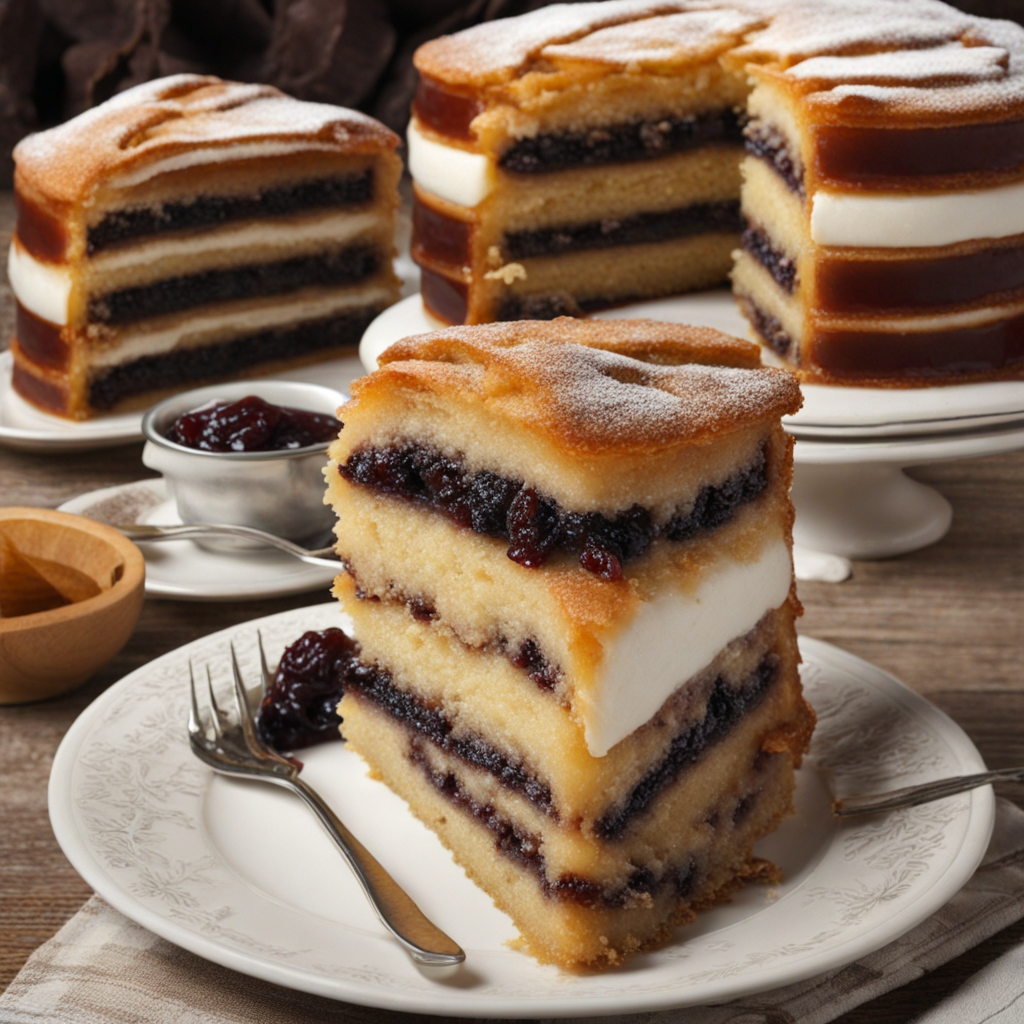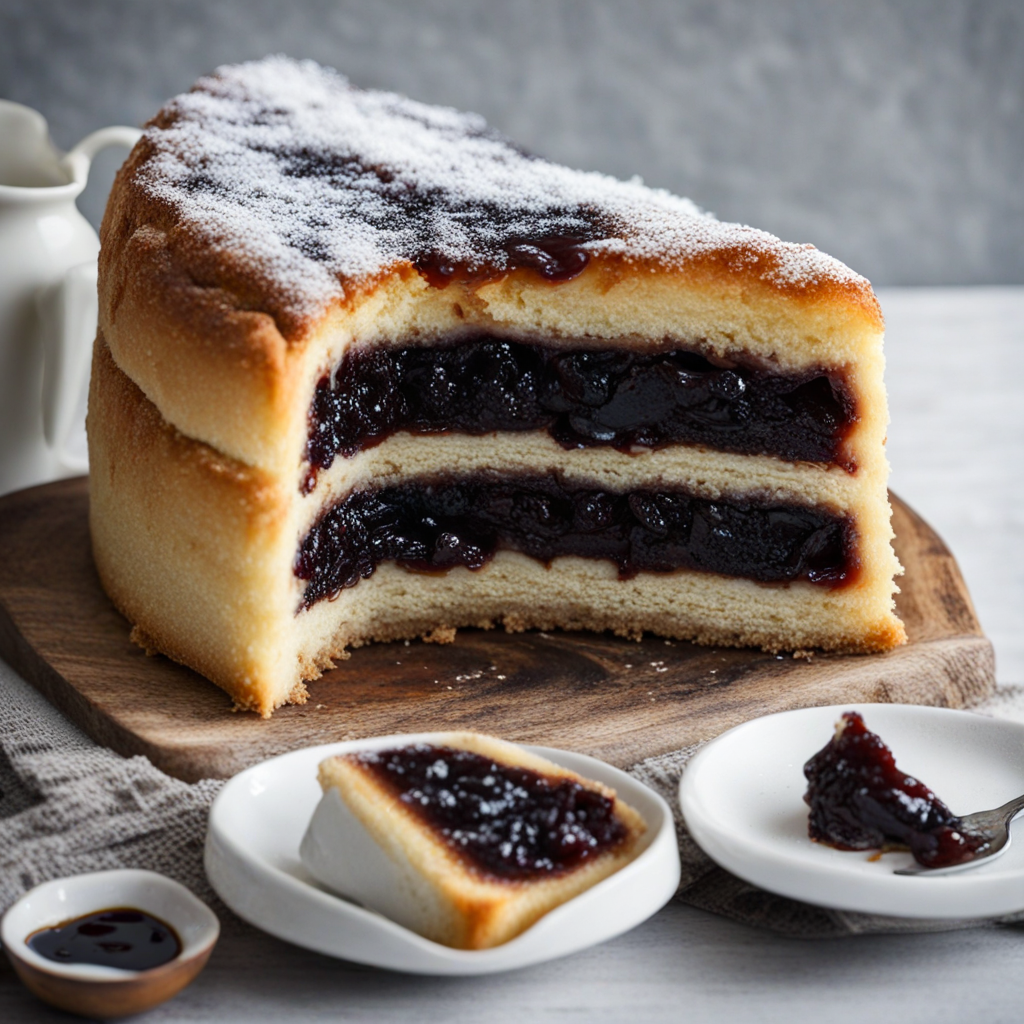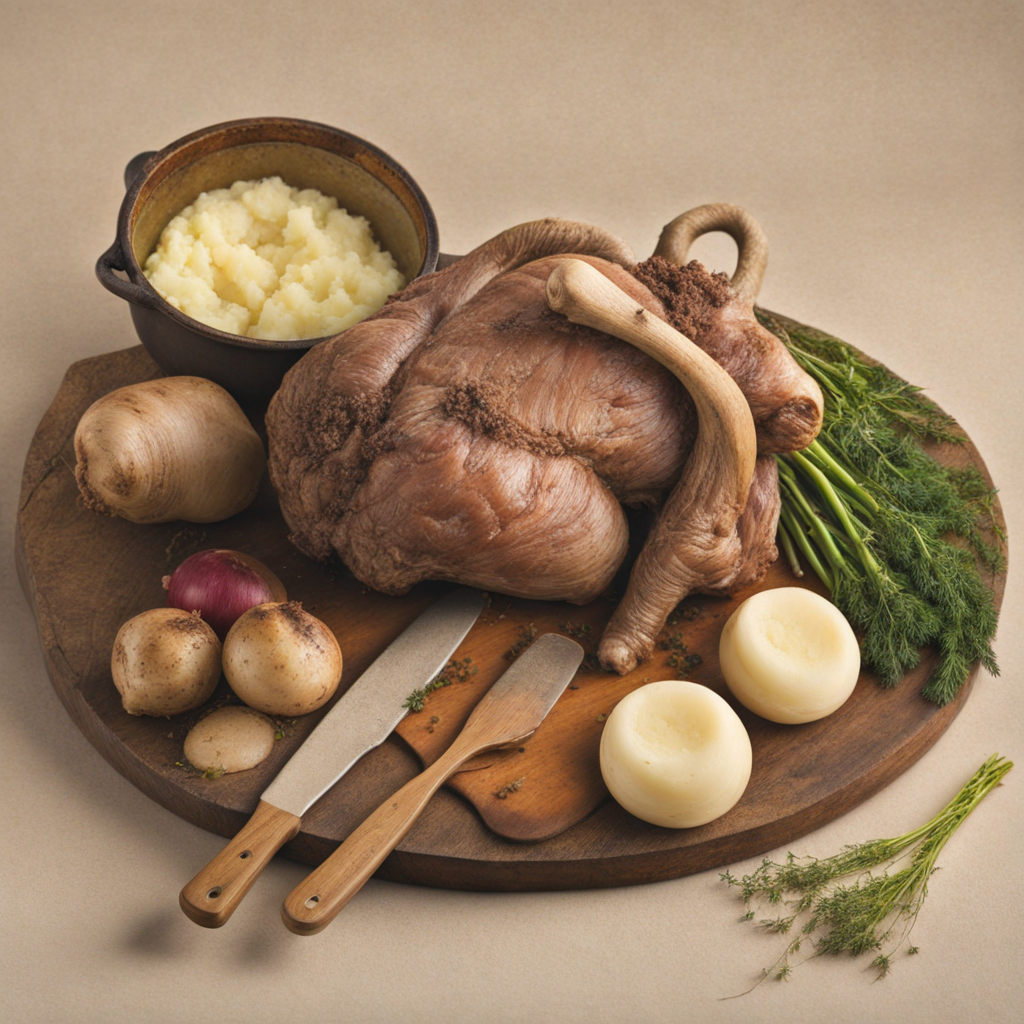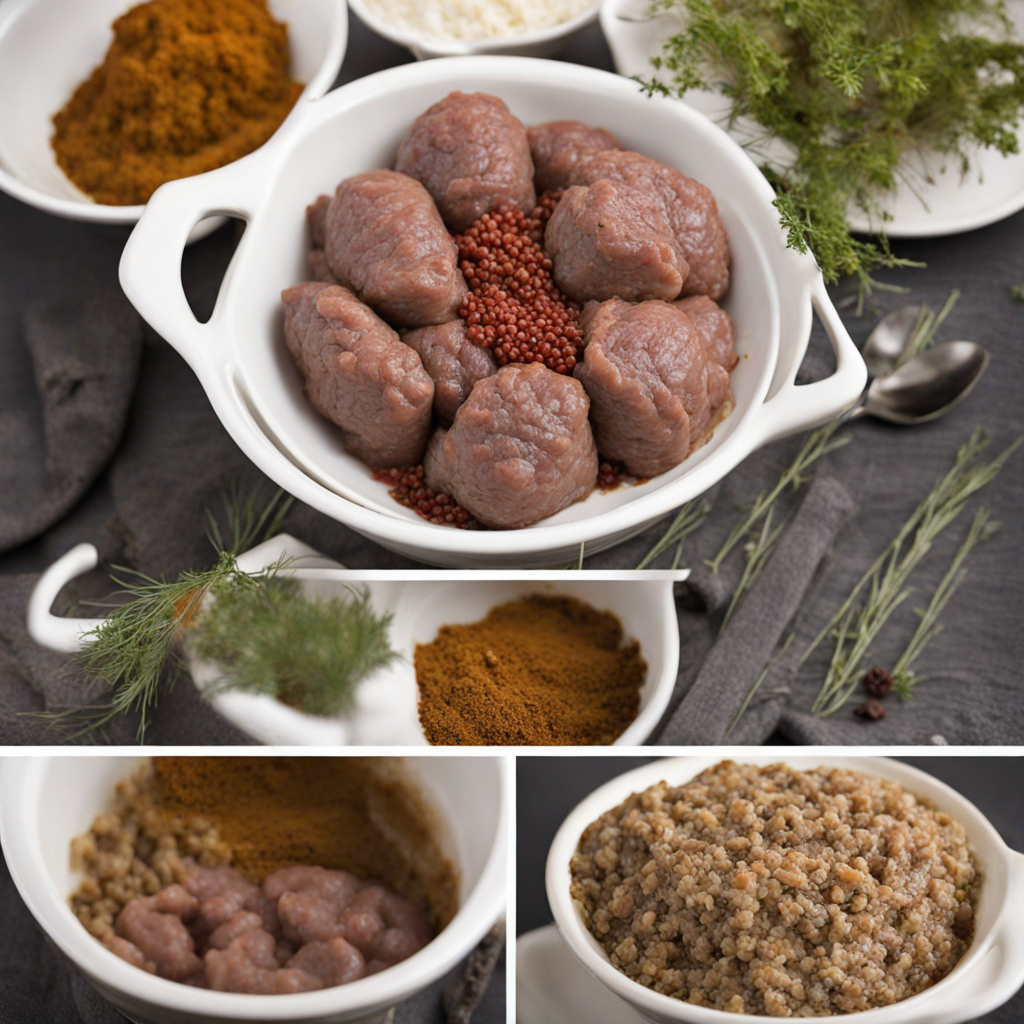Vínarterta
Vínarterta is a traditional Icelandic cake that embodies the rich cultural heritage of the country. At its core, this delectable dessert consists of layers of soft, spiced cake often made with flour, sugar, butter, and eggs. What truly sets Vínarterta apart is its filling, which typically includes a luscious blend of prune or berry preserves, adding a delightful sweetness and a hint of tartness that perfectly complements the cake's texture. Sometimes, almond flour is incorporated into the cake batter, providing a subtle nutty flavor that enhances the overall taste experience. Visually, Vínarterta is striking, with its multiple layers often stacked high and adorned with a simple icing or powdered sugar dusting. The presentation is not just for show; it reflects the careful craftsmanship that goes into making this cake. Each slice reveals the beautiful contrast between the dark, moist layers and the vibrant, glistening fruit filling, making it an eye-catching centerpiece for any gathering. The cake's texture is moist yet firm, allowing it to hold its shape while still being soft enough to melt in your mouth, making each bite a delightful experience. The flavor profile of Vínarterta is a harmonious balance of sweetness and spice, often enhanced with hints of cardamom or cinnamon, which evoke the warmth of traditional baking. This cake is not just a dessert; it carries a sense of nostalgia, often prepared for special occasions and family gatherings, symbolizing togetherness and celebration in Icelandic culture. For those eager to explore new tastes, Vínarterta offers a unique entry into Scandinavian desserts, combining simple ingredients into a sophisticated and memorable treat.
How It Became This Dish
Vínarterta, a traditional Icelandic cake, embodies a rich tapestry of history and culture that reflects the island's unique culinary heritage. The term "vínarterta" translates to "wine cake," although it is not made with wine in the modern sense; rather, it refers to the sweet and dense nature of the cake itself. This delicacy is characterized by its layered structure, typically consisting of thin layers of cardamom-flavored sponge cake, filled with a sweet prune or raspberry jam, and often adorned with a light icing or powdered sugar. The origins of Vínarterta can be traced back to the 19th century, with roots that likely extend into the culinary practices of early Icelandic settlers. The influence of Scandinavian baking traditions is evident in the cake’s layered structure, which resembles other regional cakes such as the Danish “kransekake.” The use of dried fruits, particularly prunes, can be linked to the preservation techniques employed by Icelanders to cope with the harsh winters. Dried fruits provided a vital source of sweetness and nutrition when fresh produce was scarce. Cultural Significance In Iceland, Vínarterta holds a special place in the hearts of many, particularly during festive occasions and family celebrations. It is often served at weddings, birthdays, and holidays, making it a symbol of joy and togetherness. The cake is not merely a dessert; it represents a connection to heritage and tradition. Many Icelandic families have their own recipes, passed down through generations, which adds a personal touch to the cake’s cultural significance. The cake's presence at gatherings is a testament to its role in the social fabric of Icelandic life. Sharing Vínarterta is an act of hospitality, a gesture that conveys warmth and community. The cake has become an emblem of Icelandic identity, cherished not only for its taste but also as a unifying element that fosters familial bonds and cultural pride. Development Over Time As Iceland underwent significant changes in the 20th century, the preparation and presentation of Vínarterta evolved as well. With the advent of modern conveniences and the availability of new ingredients, variations of the original recipe began to surface. While traditionalists still adhere to the classic approach, others have experimented with flavors and fillings, incorporating elements like chocolate, nuts, or even cream cheese frosting. This adaptability speaks to the cake's resilience and relevance in contemporary Icelandic cuisine. Moreover, the globalization of food culture has influenced the way Vínarterta is perceived and consumed. With increased interest in Icelandic cuisine internationally, Vínarterta has found a place in the hearts of food enthusiasts beyond the island. Many Icelandic bakeries have started to market the cake to tourists, showcasing it as a staple of Icelandic gastronomy. This exposure has contributed to a revival of interest in traditional foods, prompting younger generations to explore their culinary heritage. Regional Variations While the classic Vínarterta is widely recognized, regional variations also exist, showcasing the diversity within Icelandic baking. For instance, some regions may prefer a thicker layer of jam or a slightly different spice blend to enhance the flavor profile. In some households, additional ingredients like almonds or coconut are introduced, creating unique interpretations of the cake. These variations reflect local tastes and preferences, while still honoring the cake’s core identity. In addition to its regional adaptations, Vínarterta has also made its way into the culinary lexicon of other countries, particularly among communities of Icelandic descent in North America. The cake is often prepared for special occasions within these communities, serving as a nostalgic reminder of home for Icelandic expatriates. This transnational presence has further solidified Vínarterta as an emblem of Icelandic culture, bridging the gap between the homeland and the diaspora. Modern Day Celebrations Today, Vínarterta continues to be celebrated in Iceland, with many families holding onto the traditional recipes while also embracing new interpretations. The cake is often featured in Icelandic cookbooks, food blogs, and television cooking shows, ensuring its place in the modern culinary landscape. Some Icelanders even participate in baking competitions that highlight Vínarterta, showcasing creativity and skill while honoring traditional methods. In recent years, there has been a growing trend towards using organic and locally sourced ingredients in baking, including Vínarterta. Many bakers now prioritize sustainability and health-conscious practices, which has led to the development of gluten-free and vegan versions of the cake. This evolution reflects a broader shift in food culture, where traditional recipes are reimagined to accommodate modern dietary preferences without losing their essence. Conclusion: A Cake of Heritage and Innovation Vínarterta is more than just a cake; it is a symbol of Icelandic heritage, community, and adaptability. Its layered structure and rich flavors tell a story of resilience and connection to the land. As Iceland continues to evolve, so too does its culinary landscape, with Vínarterta standing as a bridge between the past and the present. Whether enjoyed in a family gathering or as part of a larger cultural celebration, this beloved cake remains a testament to the enduring power of food to unite and enrich lives.
You may like
Discover local flavors from Iceland







